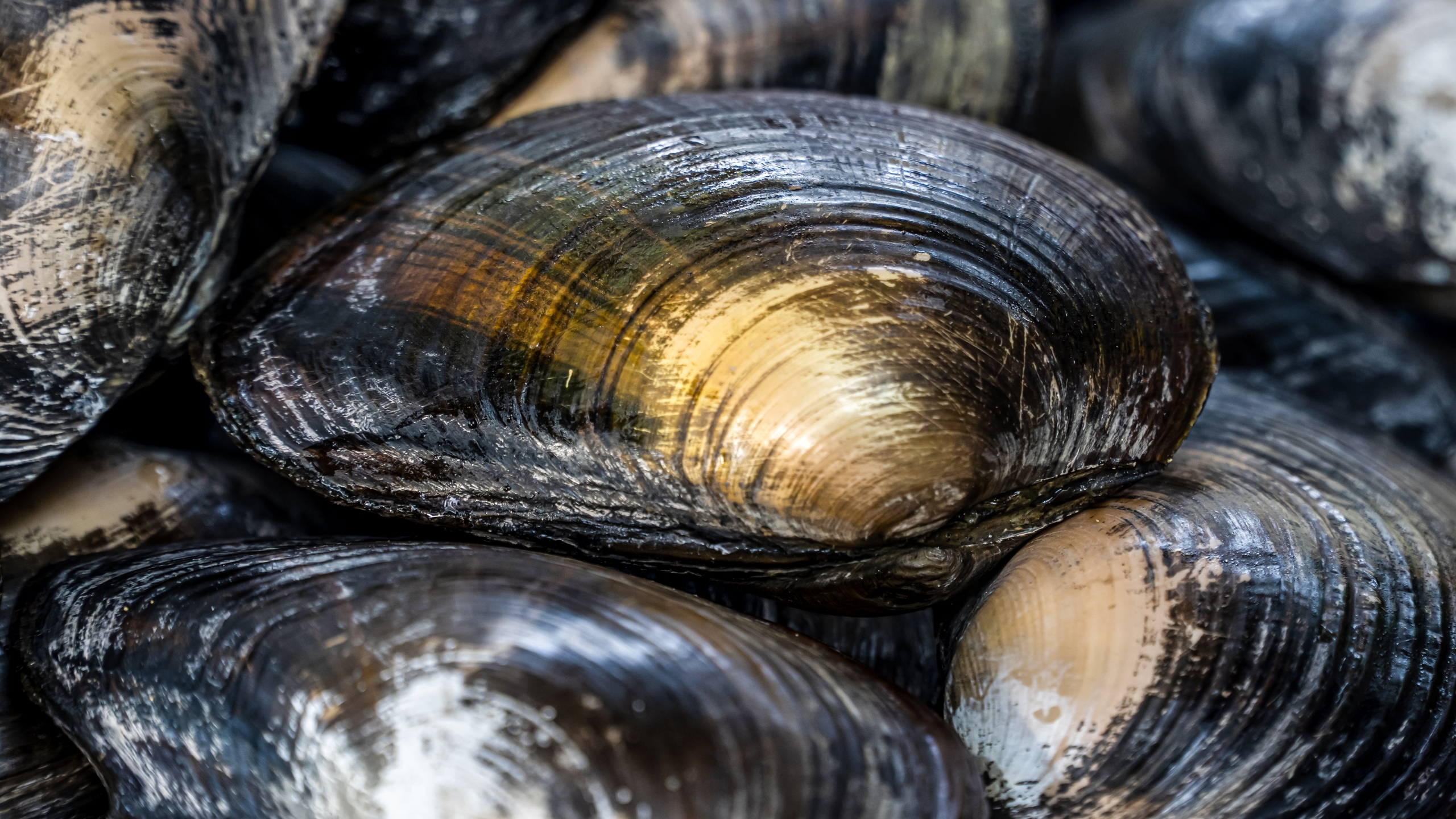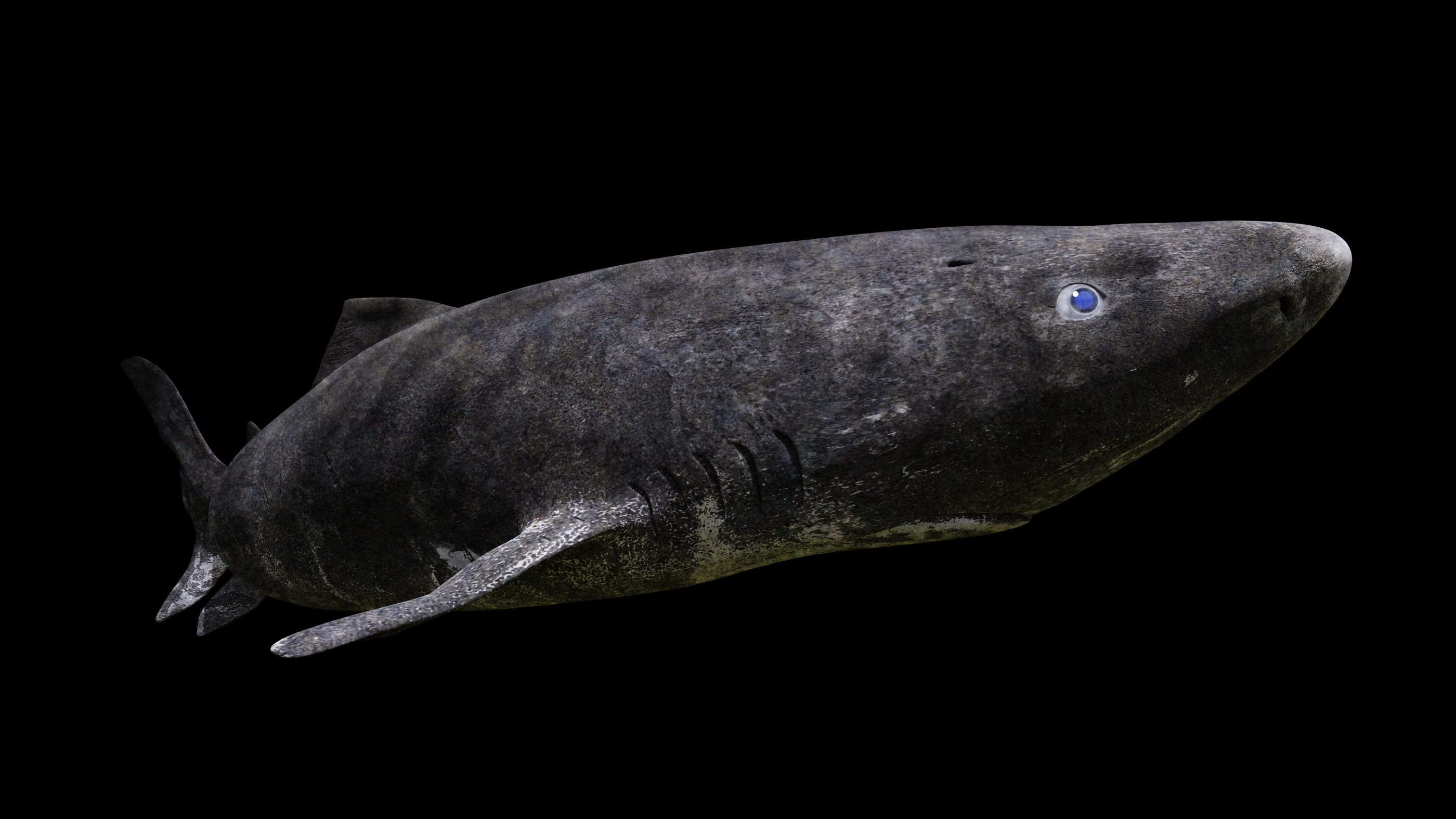What Is The Oldest Animal To Ever Live
The longest-living animals on World

The fauna kingdom boasts some incredibly long lifespans that far exceed the average homo'due south. While humans may have an "absolute limit" of 150 years, this is just a blink of an eye compared with the centuries and millennia that some animals live through; and some animals can even stop or reverse the aging procedure birthday.
Although at that place are very long-living country animals (the oldest tortoise, for instance, is virtually 190 years quondam), none of them make this list — the true age champions all alive in water. From quondam to oldest, hither are 10 of the longest-living animals in the world today.
1. Bowhead whale: potentially 200+ years old

Bowhead whales (Balaena mysticetus) are the longest living mammals. The Arctic and subarctic whales' verbal lifespan is unknown but stone harpoon tips found in some harvested individuals prove that they comfortably alive over 100 years, and may live more than 200 years, according to the National Oceanic and Atmospheric Administration (NOAA).
The whales take mutations in a gene chosen ERCC1, which is involved with repairing damaged Deoxyribonucleic acid, that may assist protect the whales from cancer, a potential cause of decease. Furthermore, another gene, called PCNA, has a section that has been duplicated. This cistron is involved in cell growth and repair, and the duplication could slow aging, Live Science previously reported.
Related: Natural rates of aging are fixed, study suggests
2. Rougheye rockfish: 200+ years old

Rougheye rockfish (Sebastes aleutianus) are one of the longest living fish and take a maximum lifespan of at to the lowest degree 205 years, according to the Washington Department of Fish and Wildlife. These pink or brownish fish alive in the Pacific Ocean from California to Nippon. They abound upwards to 38 inches (97 centimeters) long and eat other animals such as shrimp and smaller fish, according to the Commission on the Status of Endangered Wildlife in Canada (COSEWIC), an independent advisory panel that assesses the status of species threatened with extinction in Canada.
Related: Is fish caught off Alaska 200 years old?
iii. Freshwater pearl mussel: 250+ years old

Freshwater pearl mussels (Margaritifera margaritifera) are bivalves that filter particles of food from the h2o. They mainly live in rivers and streams and tin be found in Europe and North America, including the U.S. and Canada. The oldest known freshwater pearl mussel was 280 years old, according to the World Wildlife Fund (WWF). These invertebrates have long lifespans thanks to their depression metabolism.
Freshwater pearl mussels are an endangered species. Their population is declining due to a variety of man-related factors, including damage and changes to the river habitats they depend on, according to the International Union for Conservation of Nature (IUCN).
Related: Underwater maids: Mussels and clams could mop upward waterways
4. Greenland shark: 272+ years quondam

Greenland sharks (Somniosus microcephalus) alive deep in the Arctic and N Atlantic oceans. They can grow to be 24 anxiety (7.3 meters) long and have a diet that includes a variety of other animals, including fish and marine mammals such as seals, according to the St. Lawrence Shark Observatory in Canada.
A 2016 study of Greenland shark eye tissue, published in the journal Science, estimated that these sharks tin have a maximum lifespan of at least 272 years. The biggest shark in that written report was estimated to exist nigh 392 years old, and the researchers suggested that the sharks could peradventure take been as much as 512 years old, Alive Science previously reported. The historic period estimates came with a caste of uncertainty, but fifty-fifty the lowest guess of 272 years still makes these sharks the longest living vertebrates on Earth.
Related: No, scientists haven't found a 512-twelvemonth-erstwhile Greenland shark
5. Tubeworm: 300+ years old

Tubeworms are invertebrates that take long lifespans in the cold, stable environment of the deep sea. A 2017 report published in the journal The Scientific discipline of Nature found that Escarpia laminata, a species of tubeworm living on the ocean floor in the Gulf of Mexico, regularly lives upward to 200 years, and some specimens survive for more 300 years. Tubeworms have a low death rate with few natural threats, such as a lack of predators, which has helped them evolve to accept such long lifespans.
Related: Boundless carpet of worms coats bizarre deep-sea vent
half-dozen. Sea quahog clam: 500+ years old

Ocean quahog clams (Arctica islandica) inhabit the Due north Atlantic Ocean. This saltwater species can alive even longer than the other bivalve in this listing, the freshwater pearl mussels. 1 body of water quahog clam found off the coast of Iceland in 2006 was 507 years old, co-ordinate to National Museum Wales in the U.G. The ancient mollusk was nicknamed Ming every bit information technology was born in 1499 when the Ming Dynasty ruled People's republic of china (from 1368 to 1644).
7. Black coral: 4,000+ years erstwhile

Corals expect like colorful, underwater rocks and plants, but they are actually made up of the exoskeletons of invertebrates called polyps. These polyps continually multiply and replace themselves past creating a genetically identical copy, which over fourth dimension causes the coral exoskeleton structure to abound bigger and bigger. Corals are therefore fabricated up of multiple identical organisms rather than being a single organism, like Greenland sharks or sea quahog clams, so a coral's lifespan is more of a team effort.
Corals can alive for hundreds of years or more, but deep-h2o blackness corals (Leiopathes sp.) are among the longest-living corals. Blackness coral specimens establish off the coast of Hawaii have been measured to be 4,265 years old, Live Science previously reported.
8. Glass sponge: ten,000+ years sometime

Sponges are made upwards of colonies of animals, similar to corals, and can likewise live for thousands of years. Glass sponges are among the longest living sponges on World. Members of this group are oftentimes found in the deep ocean and accept skeletons that resemble glass, hence their name, co-ordinate to NOAA. A 2012 study published in the journal Chemic Geology estimated that a glass sponge belonging to the species Monorhaphis chuni was about 11,000 years old. Other sponge species may exist able to live even longer.
Related: Arctic sponges crawl around the seafloor and leave baroque brown trails to prove it
9. Turritopsis dohrnii: potentially immortal

Turritopsis dohrnii are called immortal jellyfish because they can potentially live forever. Jellyfish start life as larvae, earlier establishing themselves on the seafloor and transforming into polyps. These polyps so produce free-swimming medusas, or jellyfish. Mature Turritopsis dohrnii are special in that they can plough dorsum into polyps if they are physically damaged or starving, according to the American Museum of Natural History, and then after return to their jellyfish state.
The jellyfish, which are native to the Mediterranean Bounding main, can echo this feat of reversing their life wheel multiple times and therefore may never die of old age nether the correct atmospheric condition, co-ordinate to the Natural History Museum in London. Turritopsis dohrnii are tiny — less than 0.2 inches (4.5 millimeters) across — and are eaten by other animals such as fish or may die by other means, thus preventing them from actually achieving immortality.
10. Hydra: also potentially immortal

Hydra is a group of small invertebrates with soft bodies that look a bit like jellyfish. Similar Turritopsis dohrnii, Hydras too have the potential to alive forever. Hydras don't testify signs of deteriorating with age, Alive Science previously reported. These invertebrates are largely made up of stem cells, which continually regenerate through duplication or cloning. Hydras don't live forever nether natural conditions because of threats like predators and disease, just without these external threats, they could exist immortal.
Related: When blown apart, hydra re-get together
Source: https://www.livescience.com/longest-living-animals.html
Posted by: mcelroywitaysen.blogspot.com

0 Response to "What Is The Oldest Animal To Ever Live"
Post a Comment